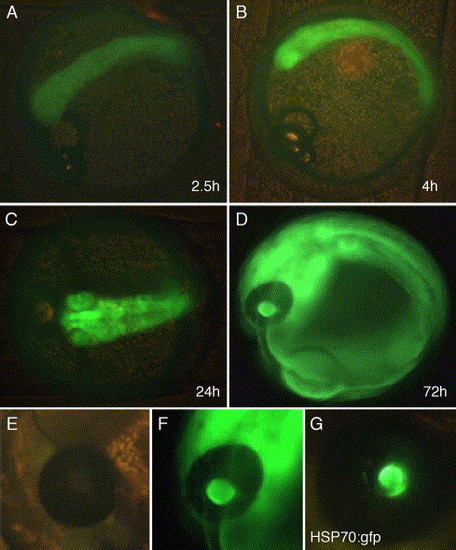Fig. 2
- ID
- ZDB-FIG-110719-18
- Publication
- Bajoghli et al., 2004 - An artificial promoter construct for heat-inducible misexpression during fish embryogenesis
- Other Figures
- All Figure Page
- Back to All Figure Page
|
Stable integration of a HSE construct into the medaka genome. (A–D) show a time course of gfp expression in a gfp:HSE:luc transgenic line. After heat treatment at 39°C (2 h), gfp expression was first detected after 2.5 h (A). Increasing signal intensity was seen after 4 h (B) and 24 h (C). Gfp activity remained for several days (D, 72 h). Note the reduction of gfp signal in the eye, but not the lens, due to pigmentation. Lenses of uninduced transgenic embryos were background-free also in the lens (E), heat treatment induced a strong response in all tissues, including the lens (F). Wild-type embryos injected with HSP70:gfp developed strong gfp activity in the lens without induction (G). |
Reprinted from Developmental Biology, 271(2), Bajoghli, B., Aghaallaei, N., Heimbucher, T., and Czerny, T., An artificial promoter construct for heat-inducible misexpression during fish embryogenesis, 416-430, Copyright (2004) with permission from Elsevier. Full text @ Dev. Biol.

